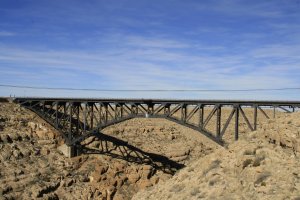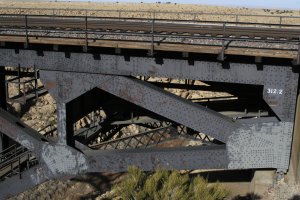D&J RailRoad
Professor of HO
I am planning on building a bridge. It will be a scale replica of the Diablo Canyon Bridge which is in AZ, east of Flagstaff on the BNSF mainline.
I have been investigating what material I need to use. Turns out I will have to use solid brass stock, 1/2"x 3/8" for the main arch and cross members and 3/8" square tubing for the uprights. The rest of the structure can be built with plastic prefab material, i.e. walkways, hand rails and tie rods.
The brass components will be joined together with thin brass sheet material at the joints as seen in the associated picture below.
I haven't worked brass and I'm not sure what kind of equipment I need to do the job right.
Can anybody provide some advice?


I have been investigating what material I need to use. Turns out I will have to use solid brass stock, 1/2"x 3/8" for the main arch and cross members and 3/8" square tubing for the uprights. The rest of the structure can be built with plastic prefab material, i.e. walkways, hand rails and tie rods.
The brass components will be joined together with thin brass sheet material at the joints as seen in the associated picture below.
I haven't worked brass and I'm not sure what kind of equipment I need to do the job right.
Can anybody provide some advice?



